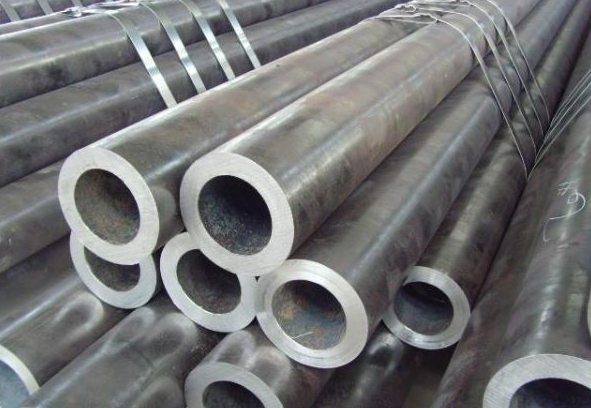Introduce ASTM A209/ASME SA209 T1 Boiler Tube
2024-04-05Leave a message
Inroduce ASTM A209 T1 Boiler Tube
ASTM A209/ASME SA209 is Standard Specification for Seamless Carbon-Molybdenum Alloy-Steel Boiler and Superheater Tubes. ASTM A209 T1 boiler tube is a type of tubing designed for high-temperature and high-pressure environments, known for its excellent heat resistance and pressure-bearing capabilities. It is commonly used in boilers and superheater systems. Heres a detailed overview of ASTM A209 T1 boiler tube:
1. ASTM A209 T1 Boiler Tube Standard Introduction:
ASTM A209 T1 boiler tube is manufactured according to the standard specification set forth by the American Society for Testing and Materials (ASTM). This standard provides detailed specifications for boiler tubes used in high-temperature and high-pressure environments, ensuring their quality and performance meet engineering requirements. In European standards, ASTM A209 T1 boiler tube typically corresponds to the 16Mo3 grade in EN 10216-2 standard.
2. ASTM A209 T1 Boiler Tube Manufacturing Process:
ASTM A209 T1 boiler tube is typically produced using seamless rolling or cold drawing processes. During manufacturing, strict control is maintained over raw material quality, heat treatment, and cold processing to ensure the inherent quality and mechanical properties of the tubing.
3. ASTM A209 T1 Boiler Tube Standard Specifications:
The standard specifications for ASTM A209 T1 boiler tube include outer diameter, wall thickness, and length. The outer diameter ranges from 12.7mm (1/2 inch) to 127mm (5 inches), and the wall thickness ranges from 1.5mm to 12.7mm. Lengths are usually fixed or double random lengths, customized according to application requirements.
4. ASTM A209 T1 Boiler Tube Chemical Composition:
The chemical composition of ASTM A209 T1 boiler tube is as follows:
|
Element |
Mass Fraction (%) |
|
Carbon (C) |
0.10-0.20 |
|
Manganese (Mn) |
0.30-0.80 |
|
Silicon (Si) |
≤ 0.50 |
|
Phosphorus (P) |
≤ 0.025 |
|
Sulfur (S) |
≤ 0.025 |
|
Chromium (Cr) |
1.00-1.50 |
|
Molybdenum (Mo) |
0.44-0.65 |
|
Vanadium (V) |
0.18-0.25 |
5. Mechanical Properties:
The mechanical properties of ASTM A209 T1 boiler tube are specified as follows:
|
Property |
Requirement |
|
Yield Strength (MPa) |
≥ 205 |
|
Tensile Strength (MPa) |
415-585 |
|
Elongation (%) |
≥ 30 |
6. Testing Requirements:
The tubing undergoes rigorous testing for chemical composition analysis, mechanical performance testing, and non-destructive testing to ensure its quality meets standard requirements. These testing and inspection procedures ensure the reliability and stability of the tubing.
7. Applications:
ASTM A209 T1 boiler tube finds wide applications in various fields, including:
- Power plants: Used in boiler systems and superheaters.
- Chemical plants: Utilized in high-temperature and high-pressure reactors and pipelines.
- Petroleum and natural gas industry: Employed in equipment for refineries and natural gas processing plants.
- Other industrial applications: Used in pipelines and equipment operating in high-temperature and high-pressure environments.
8. Characteristics:
ASTM A209 T1 boiler tube exhibits excellent high-temperature strength, good corrosion resistance, and outstanding processing performance, meeting stringent standard requirements and suitable for demanding industrial environments.
9. Bending Process:
ASTM A209 T1 boiler tube can typically undergo bending processing to meet pipeline layout and connection requirements. Before bending, the tubing needs proper preparation, such as surface cleaning and heating, to prevent crack formation. Then, appropriate bending techniques, such as hot bending or cold bending, are chosen, and parameters like bending radius and wall thickness compression rate are controlled. Quality inspection is conducted after bending to ensure the tubings performance and structural integrity meet requirements.
9.1. Pre-treatment: Before bending, strict quality inspection of the tubing is necessary to ensure it is free from defects and damage.
9.2. Selection of appropriate bending technique: Choose the suitable bending technique, such as hot bending or cold bending, based on pipeline design requirements and application scenarios.
9.3. Control of bending parameters: During the bending process, it is crucial to control the bending radius, bending angle, and wall thickness compression rate to avoid excessive deformation and damage to the tubing.
9.4. Quality inspection: After bending, quality inspection, including visual examination and dimensional measurement, should be conducted to ensure that the quality of the tubing meets the requirements.
9.5. Precautions: Avoid excessive bending and control the temperature and strain rate during the bending process to ensure the performance and structural integrity of the tubing.


